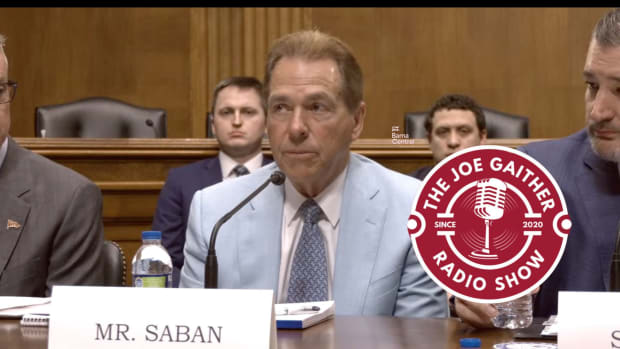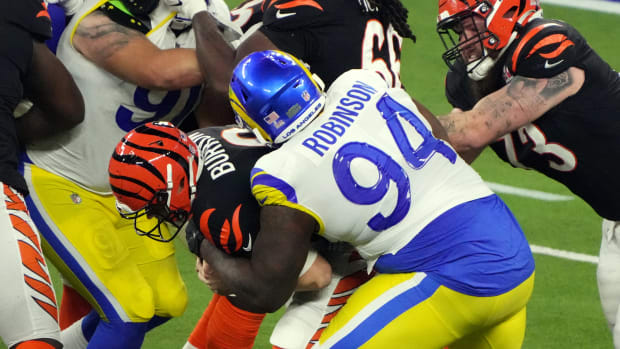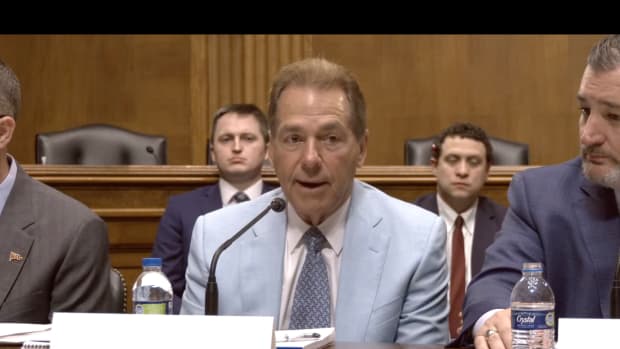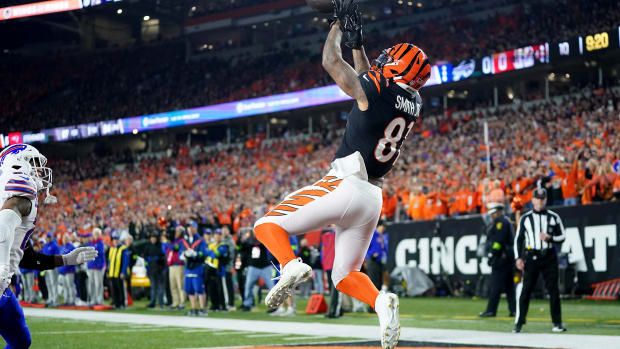Idea of College Football Playing in the Spring Beginning to Gain Traction
It's been a rough couple of days for the NCAA and college football, and we're not talking about Texas A&M being placed on probation and Tennessee suddenly having to answer questions about hiring running back coach Jay Graham.
Wednesday afternoon, the Senate Commerce, Science and Transportation committee held a hearing about athlete compensation and name, image and likeness issues. Only it turned into something else.
The longer the session went the more it became a discussion/grilling on the coronavirus pandemic and the response college football programs have had, including players returning for voluntary workouts last month.
The three-person panel included SEC commissioner Greg Sankey and Ole Miss athletic director Keith Carter, who is the chairman of NCAA’s board of governors.
Lawmakers quizzed them about viral outbreaks impacting campuses across the country, and were critical of schools both about asking athletes to sign waivers and the lack of transparency.
Roughly half of the 130 FBS programs are declining to disclose how many athletes have tested positive for the coronavirus. Complicating the issue is that each school also has its own testing protocols, and it would be extremely difficult for the NCAA to create a universal COVID-19 standard when the federal government doesn't have one and has differed to the states.
Consequently, even though college football doesn't have a backup plan in place for doing so, the idea of playing in the spring is beginning to pick up momentum.
“I think that was a scenario we talked about early on as we talked about all scenarios,” Carter told Ross Dellenger of Sports Illustrated following the hearing. “Obviously, it kind of died down as we brought student-athletes back, but I do hear that discussion being brought up more.”
Carter echoed his thoughts.
“On June 1, I was really optimistic about everything, but I’m less optimistic today about a normal start,” he told Dellenger. “We may start on time but as far as what our crowds look like ... This is going to be interesting over the next two to three weeks, because we have to put our foot on base."
The drawbacks to delaying the season until February include canceling spring practice for the second straight year, players playing back-to-back seasons in one calendar year, and the possibility that things might not improve by next spring.
Weather would also be a factor, although there's no guarantee fans would be allowed to attend games anyway.
The next shoe to drop, per se, could be next Wednesday, July 8, when the Ivy League is expected to make a decision regarding the 2020 season.
“It’s time,” Carter added. “We’re into July now. It’s time to decide ‘Hey, are we going to start on time or push this thing down the road?’”
Is Home Field Advantage Gone?
Empty stadiums and fan-free environments are the new reality in sports, but will it change the outcome of the games? The biggest impact will be on officiating and home field advantage.
The absence of fans not only affects the players. Empty venues may have a bigger impact on the way referees behave during games, writes SI's Jon Wertheim, who has researched the subject before.
What should you expect when your favorite team plays a game in a fan-free, neutral site environment? Officials’ calls, reviews, betting lines and more will all be altered.
Here's what social psychology and studies on behavioral biases can teach us about the impact of empty stadiums on referees' decision-making.
Who Stands Up For the Players?
It’s been six years since Northwestern’s football team tried to form the first union in the NCAA. Since then, only incremental progress has been made for the welfare of college athletes. And now, schools seem determined to play football during a deadly pandemic, without any input from players.
Sports Illustrated's Rohan Nadkarni argues in a commentary that college football players need a union now more than ever.
One NCAA football coach told a player, "We can have a lot of trial and error with athletes [in returning to campus], for when the regular students come."
Another: "We’re going to get a lot of things wrong."
Do the players have significant input? What ever became of Kain Colter, who tried to start the first college football union, at Northwestern? And who's ready to take the baton?
Did you notice?
• The story of the ring that is key to the NBA's restart.
• How Pirates coach Bernie Holiday became MLB's mindfulness master.
• The NFL is getting rid of two preseason games.
• Activist and basketball legend Maya Moore, the WNBA star took time away from basketball to help Jonathan Irons overturn his conviction, shares how to get involved in the fight for social justice





